Lead that kills children
- Тарас Зозулінський
First there was Gagik.
This story, about the production and export of Ukrainian paints, with dangerous lead content, began with the outrageous Armenian.
I went to study at the Moldova-Leipzig Institute in Berlin. Ahead - two weeks, and spending time with two dozen participants. Most of them were activists, the trainings turned out to be boring and extremely long. Journalists did not fully understand why here - almost did not talk about the investigation.
Gagik saved the situation. He - for all of us - "made" training. From the first day, Gagik "hit" a girl from Russia. He read Esenin to her, told legends and parables, and played the piano in restaurants.
That girl was married, raising a child - and determined - to give Gagik a fight. Armenian blood could not stand it - so hours of misunderstanding Gagik began to pour out our group. I was the luckiest - Gagik and I were accommodated in one hotel room.
I don't know how I managed to survive all these days - but I left with the firm conviction that I would never hear my roommate again.
- Taras - Jan, I conducted an investigation here, your Ukrainians appear - can you continue? Gagik wrote to me on December evening.
Frankly - I was surprised - Gagik? Investigation?
Drop it, I'm writing to him.
Gagik sent. I stared at the text for a long time. Nothing has changed. Gagik, probably thought I was a polyglot - dropped the text in Armenian.
After short negotiations, Gagik's editorial office translated the text into Russian.
Armenian trail
Gagik did a tremendous job. And it was impressive.
Gagik's investigation was based on an IPEN study. It stated that the paints of two Ukrainian brands purchased in Armenia contained dangerous lead content.
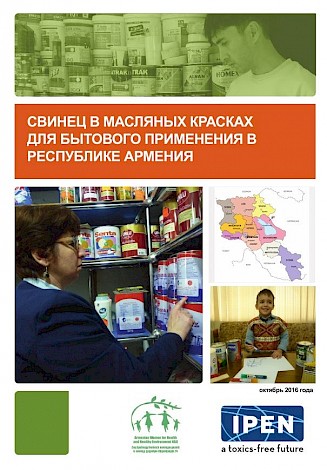
Gagik established close cooperation with the NGO "Armenian Women for Health and a Healthy Environment". Analyzed and studied the market of paints, as well as some range imported to Armenia.
Gagik found that paints are exported from 34 countries. He studied 49 types of paints in four colors - white, yellow, red, green - produced by 20 different brands in seven countries.
Gagik also received the results of research on paints conducted by the American laboratory "Forensic Analytical Laboratories".
From these results it became known that in 11 studied samples the level of lead exceeded the maximum allowable concentration (5000 ppm). At the same time, the MPC adopted in Armenia - 0.5% in 5000 ppm - is already 56 times higher than the international norm (90 ppm).
Dangerous lead levels (above 10,000 ppm) were detected in 9 samples.
Among the established trademarks - there are two trademarks from Ukraine.
These are "Smile" and "Farbex". Analyzes in the laboratory were performed on samples purchased in Armenia.
I was faced with the question of finding out who in Ukraine produces paints under these brands.

Armenian expert - assistant head of the department of ecological health - Knarik Grigoryan, told the journalist:
- Lead - a toxic metal that adversely affects human health and the environment. Even minimal amounts of lead affect children's health. This process is irreversible and can last a lifetime. In industrialized countries, the use of such paints was banned more than 40 years ago. The manufacturer uses lead for various purposes. For example, as a pigment that makes the paint opaque, protects it from sunlight. Lead compounds are often used as a catalyst and desiccant.
According to the Order of the Minister of Health of Armenia of September 11, 2014 "On sanitary-epidemiological and hygienic requirements for household chemicals and paints and varnishes", in paints and varnishes metals of the first group of danger must not exceed 0.5% in the dry residue - ie 5000 ppm.
Thus, contrary to the current legislation of Armenia, paints of two Ukrainian manufacturers that exceeded the permitted norm were imported to this country. Samples of trademarks from Ukraine contained 14,000 ppm (Smile) and 19,000 ppm (Farbex). And this at a time when the lead content above 10,000 ppm is considered dangerous.
So how dangerous is that lead?
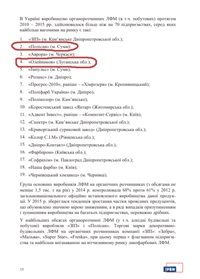
The study of paints of the NGO "Mama-86", conducted under the IPEN program, for a similar project in Ukraine, states the following:
- Lead is a toxic metal that adversely affects human health and the environment. Although lead exposure is also dangerous for adults, the harmful effects of lead on children's health are much lower and are usually irreversible and can continue to occur throughout life.
The younger the child, the more dangerous it may be for lead, and for children who are malnourished, the absorption of lead into the body is more intense. The most vulnerable to lead is the developing fetus, and a pregnant woman can pass lead to the baby as th accumulated in her body. Lead can also be passed to the baby from the nursing mother's body through breast milk. Evidence of reduced intellectual potential due to exposure to lead in childhood has led WHO to include "lead-induced mental retardation" in the list of identified diseases, as well as to include the top ten diseases in children that can be caused by environmental factors and can be eliminated.
Lead paints are one of the main sources of lead exposure in children. The term “lead paints” in the report “Lead in Organic Soluble Household Paints in Ukraine” is used as defined in the US Consumer Product Safety Act: Lead paints are any paints or other similar materials containing lead or its compounds with lead content of more than 0.009 weight percent in the dried paint film.
In most highly industrialized countries, laws and regulations were passed in the 1970s and 1980s to control the lead content of decorative paints used for interior and exterior work in homes, schools, and other areas where children are staying.
In Ukraine today there is no current legislation that would limit the content of lead in paints for decorative and household purposes. -
Simply put, when such paints are used to paint kindergartens, playgrounds or schools, children are exposed to this dangerous compound. After all, lead evaporates. Also, children - scrape off paint particles, it peels itself - and the systematic action of paint with lead - can cause a variety of diseases - up to oncology.
Ukrainian companies - exported goods - most likely - not under Armenian law. After all, samples of trademarks from Ukraine contained 14,000 ppm (Smile) and 19,000 ppm (Farbex). And the allowable norm in Armenia is 5000 ppm.

I learned that paints under the brands - Smile and Farbex, at the time of the study, produced by Ukrainian companies - FOP Oleinikov Alexander Viktorovich and LLC VP "Polisan" (respectively).
These companies can be called the greats of the Ukrainian market of paint manufacturers. According to a study by the NGO "Mama-86", at the time of the study, they were among the most important on the market. Polisan LLC took the second place, and Oleksandr Viktorovych Oleynikov took the fourth place. And this is from 70 companies
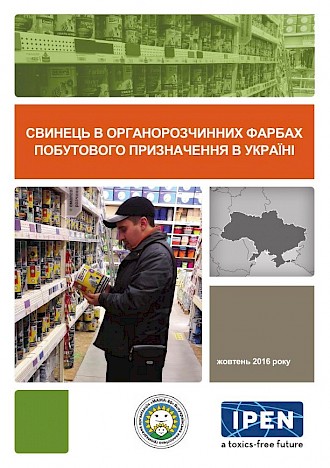
What are the results of the analysis of these companies found in the Ukrainian study?
And at this stage we return to the National Report "Lead in organo-soluble household paints in Ukraine", prepared by the NGO "Mama-86".
I was shocked. Our patriots - public activists, worked hard, established - the number of brands with dangerous lead content - and did not specify - neither brands nor manufacturers.
Why such secrecy? After all, in the same Moldova, Russia, Kazakhstan, Georgia or in the city of Almaty - in similar studies, brands and manufacturers of paints were indicated.
And only in Belarus and Ukraine - as in the old days of the Soviet Union - producers were hidden.

I called Olga Tsygulyova - who took part in the research - with a logical question - why did the NGO hide socially significant information from the public? After all, this was the study - to show citizens - which companies produce dangerous paint for children.
But Ms. Tsygulyova had a different opinion - she flatly refused to give the names of the organizations - they say - we needed to do research in general - that there is lead in paints and that it is dangerous.
Dear public activists, but everyone has known this for a long time - in the post-Soviet countries such paints are shaft. But - if you mentioned specific manufacturers, then the Department of Education, principals of schools and kindergartens, banal - LKP - would know - what paint and what brands can not be bought.
…
- I am a representative of the OSCE, - I can call you, - a stranger wrote to me at the time.
It was Tamara Kutonova, she took part in the study - NGO "Mama-86" - personally thanked her at the beginning of the national report.
Wow, I thought - now the OSCE representative himself will help me in the material.
- You are undermining the whole branch of the Ukrainian economy!
I was shocked. The OSCE representative is trying to ensure that the material is not published.
It was intriguing.
- This is the same as writing - all Ukrainian journalists are salesmen. This will cast a shadow over all Ukrainian producers. When someone goes abroad to buy paint, they will not want Ukrainian.
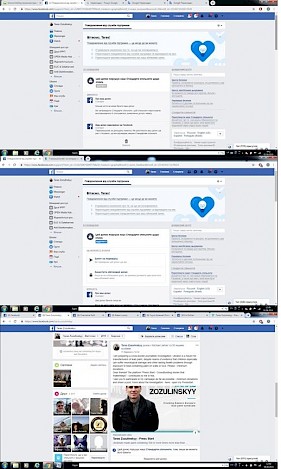
After long and lengthy correspondence, and my logical questions - is this the official position of the OSCE - Kutonova wrote - that she addressed me informally. Well, we had to start with that.
And yet, in the process of working on the material - I was blocked four times
and deleted on Facebook - for spreading spam - my posts about the material on lead in paints.
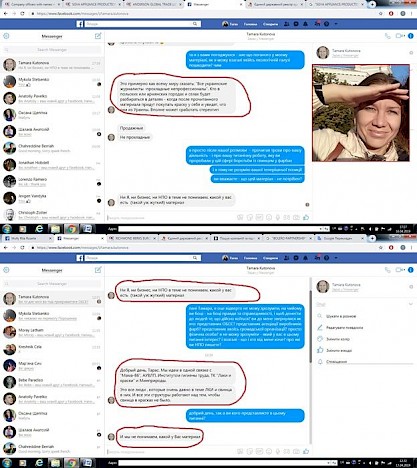
Similar national surveys were conducted in Georgia. And here - also - our already mentioned Ukrainian brands and manufacturers were noted.
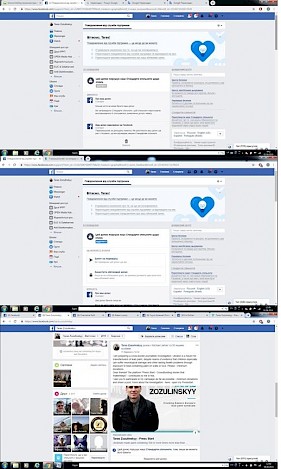
***
There is an "Association" in Ukraine. It unites most paint manufacturers. Of course - I wrote there a request for comments. I received a call from the executive director of the Association of Manufacturers of Paints and Varnishes, Oleksandr Serhiyovych Brychko.
By the way - I turned for comment not only to the leadership of the "Association". But also to all its governing bodies. After all, all its members of the Management Board are representatives of significant players in the market of paints and varnishes in Ukraine.
Thus, one of the members of the Management Board is Dedyushev Vitaliy Oleksandrovych - Polisan LLC. And the other - Oleinikov Alexander Viktorovich. This is the same FOP in whose paints (Smile), together with "Polisan" (Farbex), a dangerous content of lead was found in Armenia. Today, Alexander Oleynikov is a co-owner of the company Attol, which produces paint brand Smile
And this - Oleksandr Brychko - yes, by the way, he says - personally warned the head of the NGO "Mama-86" - so that the study did not indicate the brands and the names of paint manufacturers. And reported on potential lawsuits
On the other hand, Oleksandr Brychko assured that for 5 years now the Association has been trying to legislate restrictions on the level of lead in paints in Ukraine. Mr. Brychko sent dozens of documents stating that their organization was actually trying to eradicate lead from paints. Dozens of appeals to the Cabinet of Ministers, Prime Ministers, relevant ministers and ministries.
The association has even developed a regulation - in which it wants to legislate - the lead content in paints - no more than 90 ppm. That is, it is the most brutal measure taken in the world, for example, as in the United States.
However - from all the answers from various bureaucrats - it seems - that the Ukrainian authorities - since 2015 - are not particularly concerned about the influence of lead. on children.
On the other hand, there is a medal on both sides. Because since 2015, the Association has been doing everything to limit and reduce the lead content in paints at the legislative level.
On the other hand - paints - produced by members of the Association, which were sold in 2016 abroad - contained dangerous lead content.
Also, the Association itself put pressure - in the person of Mr. Brychko - on the NGO "Mama-86" - which conducted a national survey - not to name these manufacturers and not to make their names public.
Why? Because we are talking about the mentioned Ukrainian companies that are part of the board of the Association.
(My request to the NGO "Mama-86" - remained unanswered.)
Polisan has exported a lot of paints to different countries.
In 2013 - more than 30 million euros, in 2014 - about 27 million, in 2015 - 45 million, in 2016 - 51.5 million euros.
From them in - 2016 - Moldova - 30-35%, Kazakhstan - 30%; Lithuania - 20%, Armenia - 5%, Georgia - 15%, Belarus - 3%, Estonia and Hungary - 3%.
Of course, it is not possible to determine how many of these paints contained lead, but what they did contain is accurate.
Counterparties that purchased paints from two Ukrainian manufacturers:
Kazakhstan - 1. Foamtrade LLP, 2. FOP "Nikolaev AA" - 3. LLC "Leader of KZ Karaganda" - 4. LLP "MANSURAD" 5. LLP "Nur-As Aktau" - 6. VP Baturin Oleg Vasilyevich - 7. LLP "STROY PLUS" - 8. LLP "ArtStroy-Asia" - 9 Runa company LLP ".
Armenia - ZhV AND A LLC.
Georgia -
1. Giorgi-2004 LLC - Tbilisi, Kakheti Highway, 112, Georgia
2. SMILE MIX LLC - 0151, Tbilisi, 4-6 Chernakhudi St., Georgia
3. LLC "BMS Gorgia" - Batumi, st. Sukhumi, 10 Georgia
4. BMS Group LLC - Tbilisi, Left Embankment, Kura Georgia
5. Technochemistry LLC - Tbilisi, Isani-Samgorsky District, Kakheti Highway 25th km, Georgia
6. LLC "Patriot 2006" - Batumi, street Pushkin, 18 Georgia
7. LLC "MODUS" - Batumi, street Pushkin, 18 Georgia
Russia - SP Levin OI -, 2. - VOSTOKPOLYMERKHIM LLC - 3. Impulse LLC, 4. Metcol-Agro CJSC - Moldova - 1. SC "Redmarket & VV" SRL - p. Stresheni, Reden Republic of Moldova -
2. CJSC "PAINT-GROUP" - Tiraspol, street Shutova 7 "B" Transnistrian Moldavian Republic
3. Tiraspol, street M. Potemkina, d.7M O L D O V A - LLC 'Chameleon'
4. SC "CAROLINA GUTU" SRL - str. Alexandru cel Bun, 30/1 Ialoveni, Moldova
5. SC "Supracolor" SRL - ul. Hristo Boteva 19 / 7-115 Chisinau, Moldova
6. AGAT-D SRL - Chisinau, street Lunka Bikulov 28/1 of the Republic of Moldova
7. OJSC "Floare" - Bender, str. Communist 181 Moldova Transnistria
AGAT-D SRL - was in the process of bankruptcy - although it actively purchased paints from a Ukrainian manufacturer.
In Ukraine, the production and sale of lead paints is not regulated by the authorities. This makes it possible to produce products containing dangerous amounts of lead.
But there are restrictions in the countries to which two Ukrainian paint manufacturers export their products.
As
that in the USA and the EU the permissible concentration of lead is 90 ppm, in the post-Soviet countries - the Customs Union - it is 5,000 ppm.
But Ukrainian manufacturers export paints that exceed even this permissible norm - the lead content of Ukrainian paints imported to Belarus, Kazakhstan, Armenia, Moldova and Georgia.
In response to a request for comment - FOP Oleynikov wrote - that the last bag of lead - 25 kg, they recycled in 2015. And after that lead compounds were not used. And so it was necessary - that this paint - in 2016 was bought by Armenians, Georgians, Kazakhs.
Of course, all the research and laboratory tests mentioned in this article are for 2016. It is extremely problematic to prove that in the future the mentioned Ukrainian companies use lead in paints. But it is possible.
***
According to national studies in many countries conducted under IPEN projects, children are exposed to lead from paints used to paint walls, windows and doors.
The paint begins to peel off and this leads to the release of lead into dust and soil. Also serious health hazards can be previously painted with lead paints, which are subjected to sandblasting or cleaned in preparation for the application of new paint.
Children who play outdoors or at home soil their hands with soil or house dust, which is then found in their mouths due to the behavior inherent in children. If children play in areas contaminated with lead, the dust or soil they absorb during play will contain lead. This is especially true for children under the age of six, and it is at this age that the effects of lead pose a particular danger to children. An ordinary child between the ages of one and six absorbs 100 to 400 mg of house dust and soil daily.
In some cases, children collect pieces of paint that has peeled off and taste them. This can be especially dangerous because the concentration of lead in peeling paint is usually much higher than in dust or soil.
Also, when children's toys, home furniture or other objects are painted with lead paints, children can bite them and directly absorb the dried lead paint. However, the most common way for lead to enter a child's body is to absorb lead-contaminated dust into their hands.
Although lead exposure is dangerous for adults, the harmful effects of lead on children's health are manifested at lower levels. In addition, a child's body absorbs up to five times more lead that is ingested than in adults, and in children who are malnourished, lead is absorbed even more intensely.
The term "lead paint" is used as defined in the US Consumer Safety Act: any paint or other similar coating containing lead or its compounds with a lead content of more than 0.009 weight percent. In this case, a large amount of dust contaminated with lead rises in the air.
The younger the child, the more dangerous the effects of lead can be, which is usually irreversible for health and can be manifested throughout life. The most vulnerable are the fetus and the pregnant woman, who can pass on the body of her developing baby in the womb, the lead accumulated over a lifetime.
According to the WHO, "Lead does not play a significant role in the human body, and lead poisoning accounts for about 0.6% of total global diseases." Evidence of a decline in intellectual potential due to exposure to lead in childhood has led the WHO to include "lead-induced mental retardation" in the list of established diseases, and to include this disease in the top ten diseases in children caused by environmental factors that can be eliminated.
In recent years, medical research has shown a significant effect of lead on children's health at lower and lower levels of exposure. The information provided in the WHO newsletter on lead poisoning and health states that "there is no established safe level of lead exposure".
When a child is exposed to lead at an early age, the damage to the child's nervous system increases the likelihood of problems with schooling, impulsive and deviant behavior.
Lead exposure in early childhood has also been associated with increased hyperactivity, attention disorders, incomplete secondary education, behavioral disorders, juvenile delinquency, drug addiction, and imprisonment.
The effects of lead exposure on children are lifelong and have a long-term impact on future productivity, which on average makes them less economically successful. A recent study examining the economic effects of childhood exposure to lead exposure in national economies for low- and middle-income countries estimates the overall cumulative
loss of 977 billion international dollars per year.
This indicator takes into account the effects of lead on the development of the nervous system of children (assessed by reducing IQ) and links the impact of lead-induced decrease in IQ with a decrease in economic productivity throughout life (life expectancy).
***
… And about Gagik. He insisted on visiting. And so I gave in - found cheap tickets.
"Gagik-jan, I'm coming to you, wait!" I wrote to him.
After that, Gagik stopped calling and writing to me - but did not respond to my messages. So out of friendship. And I remembered how he swore in love to a Russian journalist. Like - forever.
***
From the explanatory note of the Association of Manufacturers of Paints and Varnishes:
The effect of lead on children
Numerous studies have shown that children are significantly at risk of lead poisoning. The main indicator of the impact of lead on children's health is the level of its content in the blood. Today there is a constant revision of the recommended standard content of lead in the blood of adults and children. The results obtained in the implementation of large-scale international and national projects confirmed that when the concentration of lead in the blood of a child from 10 to 20 μg / l develops neurological disorders, there is a decrease in the rate of mental development (IQ).
Young children are especially vulnerable, because they absorb 4-5 times more lead that enters the body than adults from any source. At high levels of exposure, lead disrupts the functioning of the brain and central nervous system, causing coma, convulsions and even death. Thus, the impact of lead-contaminated soil and dust through battery recycling and lead mining has led to mass lead poisoning and high mortality of young children in Senegal and Nigeria. Children who have survived severe lead poisoning may suffer from mental retardation and behavioral disorders.
At lower levels of exposure, which do not cause any obvious symptoms and were previously considered safe, as it has now been found, lead causes a number of harmful effects in various body systems. In particular, lead affects the development of children's brains and leads to a decrease in the rate of mental development (IQ), behavioral changes, such as reducing the duration of concentration and increasing anti-social behavior, as well as impaired learning.
Children at the earliest age (including the fetus during development) and children living in poverty are most at risk. Because, without getting enough and proper nutrition, children are more exposed to lead, because their body absorbs more lead in the absence of other substances, such as calcium.
A large-scale study of the nature and extent of lead poisoning in children in the United States has shown that about 2.5 million urban children are exposed to lead in concentrations that are hazardous to health and can adversely affect their intellectual development. According to the results of a study of children with blood lead concentrations <25 μg / dl, it was found that the IQ decreases by an average of 1-3 marks with each increase in blood lead concentration by 10 μg / dl.
In the blood of children from ecologically unfavorable areas of Ivanovo (Russia) in comparison with the control group revealed deterioration of blood parameters, namely: in 33% of subjects - eosinophilia, in 47.6% - changes in glycerin resistance - in 38.1 osmotic resistance, in 9.5% - in erythrocytes Heinz bodies and an increase in the number of erythrocytes with basophilic granularity were detected. In the blood of children living in cities with metallurgical industry (Russia), elevated lead levels were determined - from 9.9 ± 0.5 μg / dl to 13.5 ± 0.5 mgc / dl.
In the blood of children in Odessa, the concentration of lead in the blood was set at 6.28 μg / dl, which corresponds to a safe level, but in 20% of them the level exceeded this limit.
A study conducted by experts from the Children's Medical Center in Cincinnati showed that the figure of 10 mg / dl of lead in the blood of children should be reduced at least twice. When researchers tested intelligence on more than 4,000 students and compared the results with blood lead levels, it was found that even 2.5 μg / dL could well be considered a toxic dose. Even at low doses, lead poisoning causes a decrease in intellectual development, attention and ability to concentrate, leading to the development of aggression, hyperactivity and other problems in the child's behavior. These developmental abnormalities can be long-lasting and irreversible. Low birth weight, stunted growth and hearing loss are also the result of lead poisoning. High doses of intoxication lead to mental retardation, cause coma, convulsions and death.
In children, prolonged exposure to lead causes renal dysfunction. In the study of serum, erythrocytes, urine in children suffering from acute and chronic pyelonephritis, 40% revealed
o increased content of lead in the urine, which indicates a probable relationship between its content in the body and the development of renal pathology. The formation of stable compounds of lead with erythrocyte hemoglobin, slow release may be one of the factors contributing to the development of pyelonephritis.
Lead at chronic exposure in low doses can disrupt metabolic processes in bone tissue. It has been studied that the lead content is higher than the reference values, caused a decrease in the intensity of bone metabolism in children and an increase in diseases of the musculoskeletal system.
Studies have shown that an increase in the proportion of heavy metals, including lead in the environment, their long-term effects on children leads to decreased immunity, increased levels of infectious and allergic diseases.
Higher than in adults, the sensitivity of children to lead is due to the existence of critical periods of development of the nervous, immune, reproductive systems and metabolism, when the body's sensitivity to lead increases significantly; immaturity of a number of enzymatic detoxification systems and metabolic processes, limited functionality of the liver and kidneys, aimed at removing xenobiotics.
***
Government responses to the Association's requests:
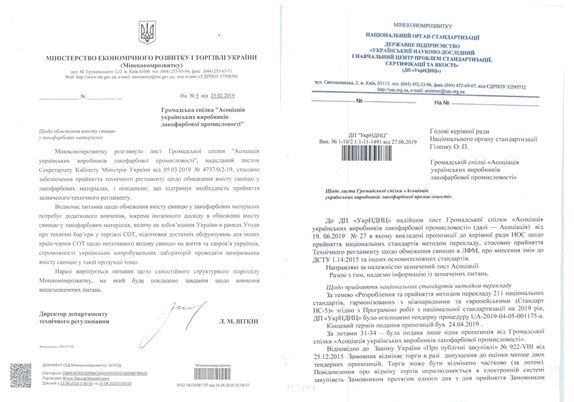
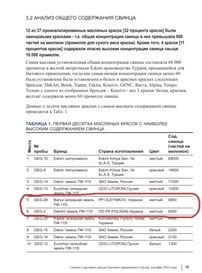
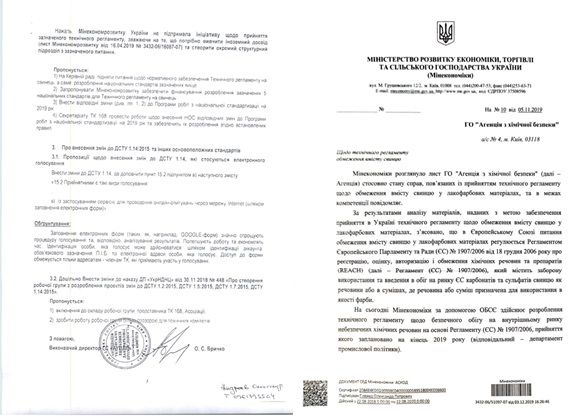
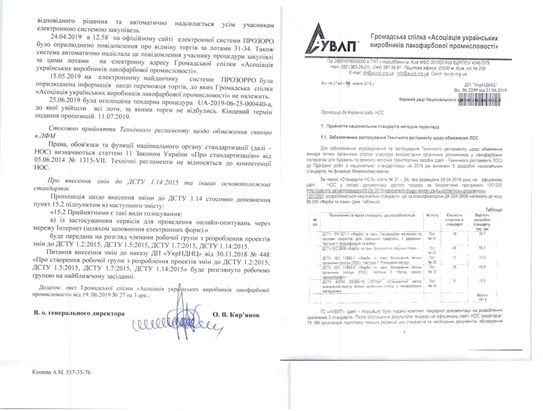
This investigation was conducted and funded with the support of the Press Start campaign
https://www.pressstart.org/

 PRESS START
PRESS START